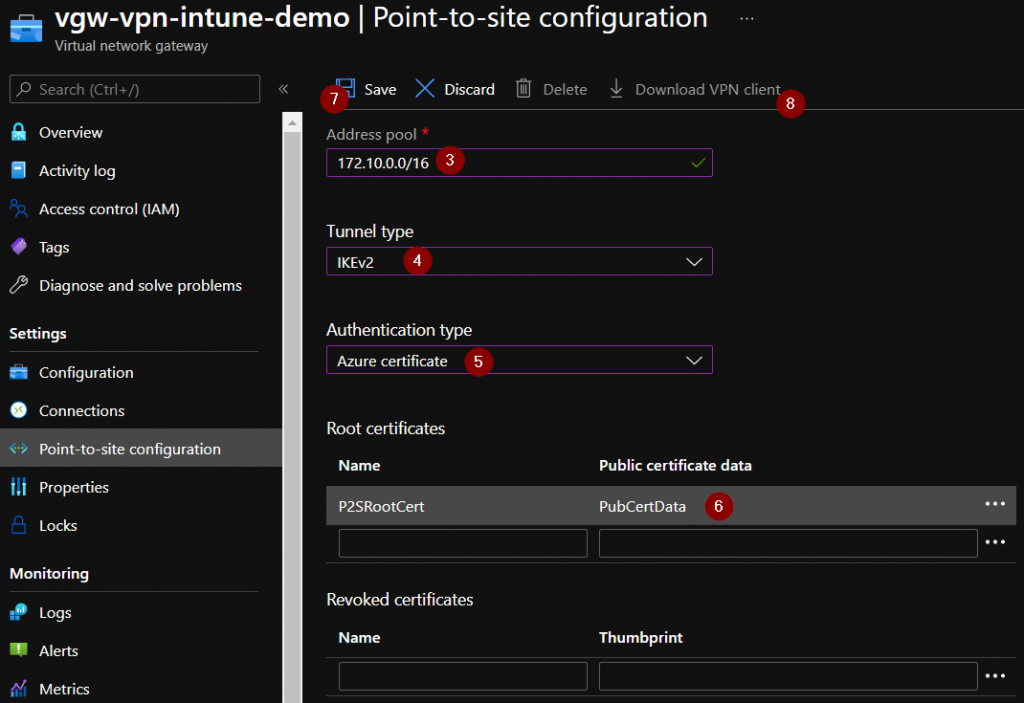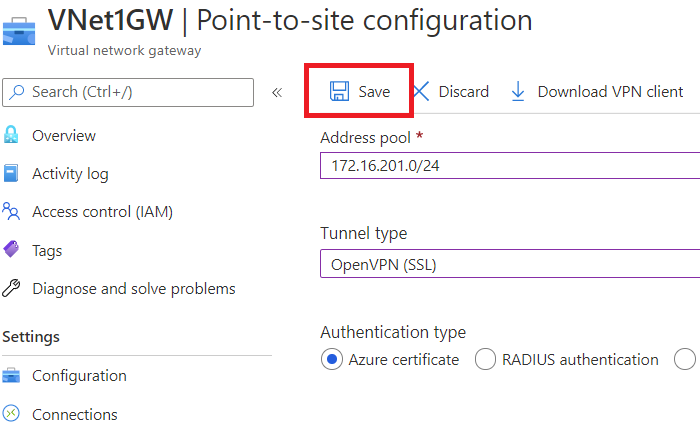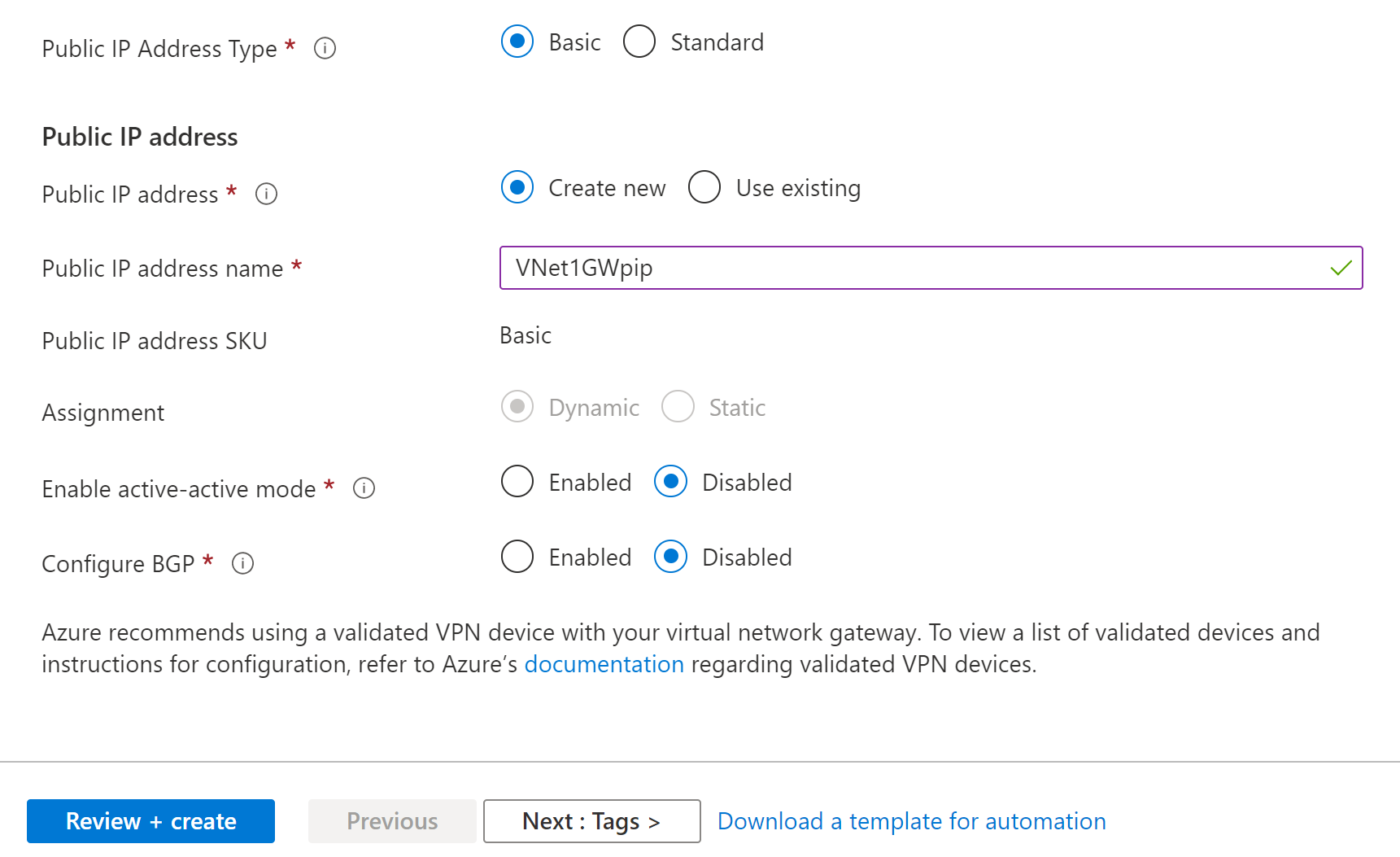
- #Azure point to site vpn not using root ca how to
- #Azure point to site vpn not using root ca manual
- #Azure point to site vpn not using root ca windows
Note that the IP address for the VPN gateway ends with 0 (e.g., 172.16.201.0) to remove the need for changing the script according to the allocated IP on the VPN connection. The following batch script runs your VPN connection named Aneka-VNET-SITE and then does the example ROUTE ADD:

In the above example, the IP address allocated to my host is 172.16.201.1 and remote machines in Azure are from the 192.168.0.0/16 range. If you do not have a route for sending traffic to destination IP addresses (similar to the below example), you need to do this manually.ġ92.168.0.0 255.255.0.0 On-link 172.16.201.1 28
#Azure point to site vpn not using root ca windows
If you have connectivity issues to remote machines (not able to ping remote machines), you should check windows route with the following command. You must be already connected to Azure!!!.Select your Azure Client Certificate and ok.Now test the connection to Azure and it should be giving you the option to select the client certificate.And uncheck the option “Use default Gateway on remote network”.Finally, to continue having Internet connection even when we are connected to the VPN go to the “Networking” tab and from there go to the properties of the IPv4 protocol.

#Azure point to site vpn not using root ca manual
You should modify properties of the Manual VPN you created. You should find something like Tunnel DeviceName = TunnelAddress = azuregateway-59cc4……………………. To find the address follow you should check the log file of your unsuccessful VPN connection you created based on the VPN client package downloaded from Azure. For the address, you should indicate the TunnelAddress to which you want to connect.
#Azure point to site vpn not using root ca how to
Check that you followed all steps in Part 3.2 Generate and install the client certificates of our instruction on how to configure Azure point-to-site VPNs.

In the following instruction, I will go through options to resolve this issue.Īfter installing and configuring the Point-To-Site VPN client, sometimes the following error occurs when dialing the connection: In some circumstances, you may get error 798 with the status “A certificate could not be found that can be used with this Extensible Authentication Protocol”.

In my previous post, I discussed on how you can configure Azure point-to-site VPNs to create a virtual network on the Azure platform.


 0 kommentar(er)
0 kommentar(er)
